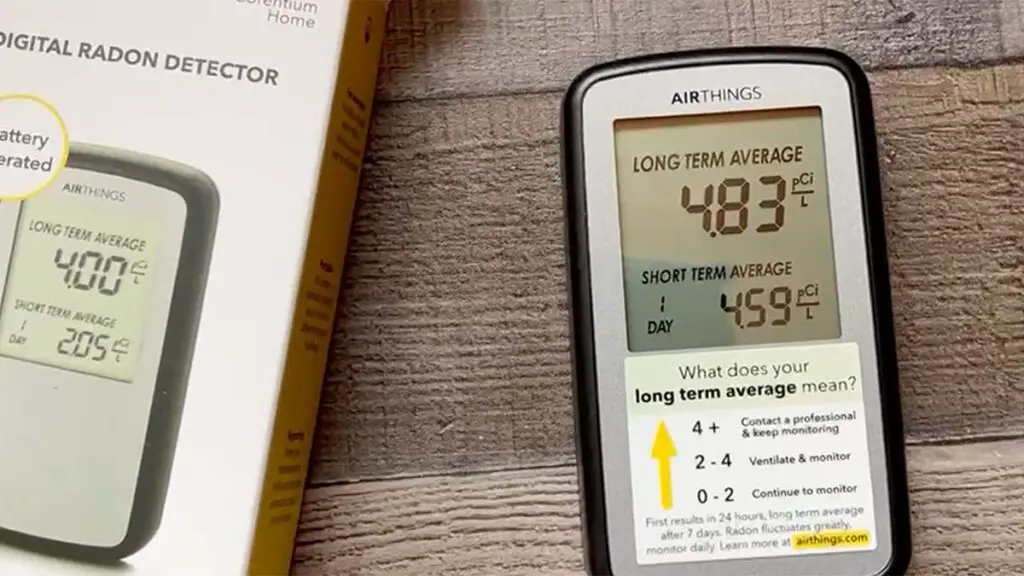You check smoke detectors, install carbon monoxide monitors, and secure chemicals. But what about one of the top unseen home threats? Surprisingly, indoor air can accumulate a dangerous invisible gas called radon.
Perhaps you’ve heard whispers of radon but filed it away as an impalpable, almost fictional risk. I certainly did, oblivious to radon infiltrating homes nationwide until test results revealed a silent saboteur.
This odorless, tasteless menace originates from natural uranium breakdown underground. As gas seeps through home foundations, radon concentrations intensify undetected—a literal homewrecker.
Without a radon test, you’ll never suspect it. I couldn’t believe a grave hazard had accumulated harmfully for years until I simply placed test kits.
So, how exactly does radon deleteriously impact our bodies after infiltration? The threat lies in inhaling radioactive particles, which lodge and damage lung tissue through cell mutation over time. The predominating health consequence of radon is, tragically, lung cancer—making radon the #2 cause after smoking when combined. 1
This brutal partnership significantly elevates lung cancer risk over either factor alone. The stakes rise higher for smokers confronting home radon exposure without knowing it. This one-two punch can manifest in lung cancer 5-25 years post-exposure. 2
The vital countermeasure is straightforward testing to determine if radon festers. Purchase inexpensive DIY radon test kits widely available online or at hardware stores. For ongoing monitoring against radon fluctuations, radon detectors now even offer home automation integration and app alerts.
If raised radon levels surface, don’t panic. A professional radon mitigation contractor can effectively install a radon mitigation system with vent pipes and fans to route harmful radon gas outside before concentrations intensify. Additionally, sealing basement cracks and entry points limits further infiltration into living areas.

Lingering Health Issues That May Indicate Radon Lurks At Home
Have you or your family members been more tired than normal lately despite getting ample sleep? Or perhaps a nagging cough persists despite medication and time. Pay attention to these subtle signs – they may indicate an odorless, unseen home health threat: radon gas.
Like most people, I used to dismiss nagging health issues as simple aging or common colds going around. But when my young daughter complained of sudden fatigue, and I developed a stubborn cough for no clear reason, it raised red flags that something else was amiss. That’s when I discovered even mild symptoms can unmask radon’s quiet menace.
Radon often lurks undetected as it invisibly seeps into homes over years or decades. But the body alerts us through various signals that persistent radiation and lung damage may be accumulating. By recognizing and testing early, we can tackle hazards hiding in plain sight:
1. Persistent Cough
A cough enduring weeks without cold symptoms can indicate irritation from radon particles accruing in lung tissue. Be especially vigilant if children develop chronic coughs without discernible causes. Ask: could radon be the stealthy culprit?
2. Hoarse Voice
A hoarse, raspy voice repeatedly creeps back and rings alarm bells. Unexplained vocal changes may result from radon exposure, gradually impairing delicate lung tissue needed for clear speech.
3. Shortness of Breath
Radon can chip away at lung capacity over time. If easy tasks leave you inexplicably winded, radon could quietly weaken crucial respiratory fitness.
4. Recurring Infections
Frequent bouts of lung infections like bronchitis may demonstrate radon has compromised the body’s respiratory defenses. This corrosion of immune protection often compounds over the years.
5. General Fatigue
Extreme tiredness and lethargy with no discernible cause might reflect the body working overtime to combat radon’s assault. Constant damage and repair cycles tax the entire body’s energy.
6. Appetite Loss
When unexplained appetite or weight loss occurs, underlying conditions like cancers might be the cause. Radon is known to increase disease risk over its prolonged radioactive exposure.
7. Weight Loss
Science still isn’t certain why radon exposure is sometimes linked to unintentional weight loss. But this red flag may indicate uncontrolled damage, so it warrants further medical investigation.
8. Anemia
While not a direct indicator of radon, emerging anemia and other symptoms should raise suspicions that an unseen health condition exists. Radon’s body-wide effects may be a culprit.
9. Emphasize Follow-Up Diagnostics
If any health changes without clear causes arise, especially lung-related ones, request appropriate medical tests to uncover potential radon exposure or other diseases concerning it. Catching issues early vastly improve the odds.
10. Take Preventative Action
Don’t ignore nagging health signals or reflexively blame aging. Protect yourself and loved ones from radon’s avoidable risk through proactive testing. Radon’s invisible intrusion can be sent away for good with vigilance and mitigation.
FAQs About Radon Symptoms
Where does radon accumulate at home?
Radon gas levels accumulate in home areas in contact with soil, like basements and crawlspaces. Cracks in foundations provide entry points for the radioactive gas seeping from decaying underground rock. Left unchecked, colorless radon pools invisibly at dangerous concentrations.
What health effects does radon cause?
Radon gas is insidious because it impairs health silently, without any immediate symptoms signaling threats accumulating. Only long-term radon exposure escalates lung cancer risk through genetic damage from embedded radioactive particles. This lung tissue destruction can manifest decades after initial contact.
Is it OK to live in a house with radon?
Radon contamination below 4 pCi/L is considered reasonably safe according to the EPA. However, radon risk rises sharply above this threshold, especially when accumulating in confined home spaces for years. Any detectable radon merits ongoing testing and preparedness to mitigate further infiltration through ventilation and sealing cracks. Protect your household by refusing to tolerate radon’s presence.
- EPA: https://www.epa.gov/radon/what-are-health-effects-exposure-radon
- American Cancer Society: https://www.cancer.org/cancer/latest-news/radon-gas-and-lung-cancer.html
- Agency for Toxic Substances and Disease Registry: https://www.atsdr.cdc.gov/csem/radon/who_risk.html







